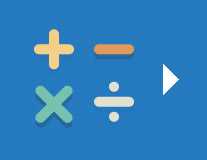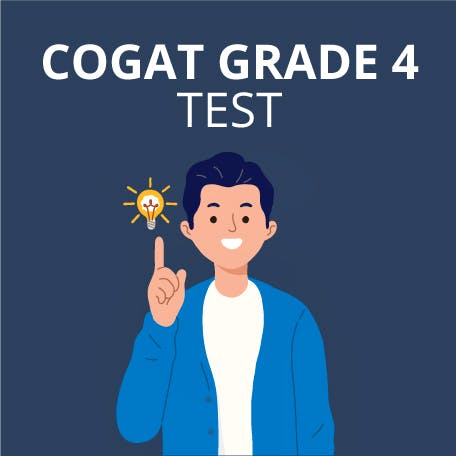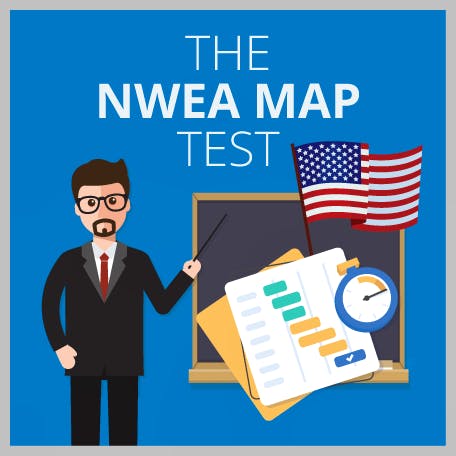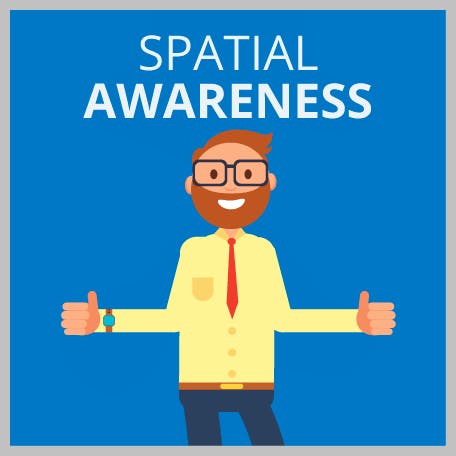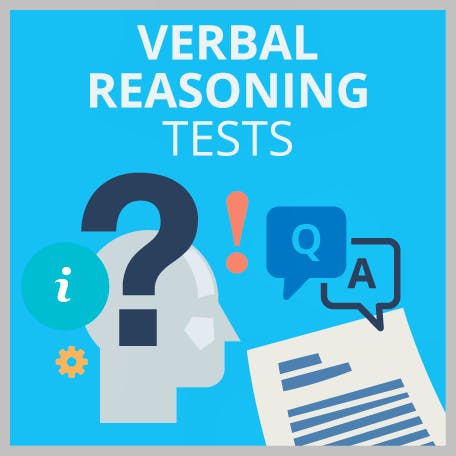A Guide to the NNAT Test: Examples and Tips
Updated January 30, 2024


If your child is under the age of 12 and aims to get into a gifted school program, they will most likely be required to take the NNAT test to assess their skills.
If you know that your child is expected to take the exam, you can help them prepare for it by letting them know what to expect.
This article contains the most relevant information concerning the NNAT test, including its purpose, scoring system and levels.
You will also receive plenty of helpful tips on how to help your child prepare for the exam by completing a Naglieri Nonverbal Ability Test sample and working on their weaknesses in each question type.
What Is the NNAT Test?
The Naglieri Nonverbal Ability Test (NNAT) was created by Jack A. Naglieri of Pearson Education as a standardized test for assessing the reasoning and problem-solving abilities of K-12 students (ages 5 to 17).
The NNAT test has become part of the admission process for talented schools and gifted programs across the US.
Unlike similar tests, such as the OLSAT test and the CogAT test, the NNAT assesses students only through their non-verbal skills, and it doesn’t require them to express aptitude in speaking, reading or writing.
Instead, children are required to recognize abstract designs and shapes. Since it contains only minimal language, the NNAT is considered one of the most culturally neutral exams across the country. It enables students to show their aptitude and be scored regardless of their socioeconomic background or prior education.
Although the score on the NNAT can be used as an admission requirement for talented and gifted programs, there could be other reasons for taking the test.
If a child shows any particular talent, they can take the NNAT test, whether they plan to apply for a gifted program or not.
Another popular reason students take this test is its non-verbal nature. Unlike the SCAT exams, this allows children who excel only in non-verbal skills or don’t have English as their first language to showcase their talents.
Testing Levels for the NNAT
The levels are based on the child’s age and school year, and they are as follows:
- Kindergarten: NNAT Level A – Includes only questions from the Pattern Completion and Reasoning by Analogy categories
- Grade 1: NNAT Level B – Includes questions from Pattern Completion, Reasoning by Analogy and Serial Reasoning
- Grade 2: NNAT Level C – Questions from Pattern Completion, Reasoning by Analogy, Serial Reasoning and Spatial Visualization
- Grade 3 to 4: NNAT Level D – Questions from Pattern Completion, Reasoning by Analogy, Serial Reasoning and Spatial Visualization
- Grade 5 to 6: NNAT Level E – Questions from Pattern Completion, Reasoning by Analogy, Serial Reasoning and Spatial Visualization
- Grade 7 to 9: NNAT Level F – Incorporates questions from Reasoning by Analogy, Serial Reasoning and Spatial Visualization
- Grade 10 to 12: NNAT Level G – Composed of questions from the Reasoning by Analogy, Serial Reasoning and Spatial Visualization categories
NNAT Question Types and Examples
As you’ve seen above, the NNAT test has up to four types of questions. Each of them assesses a different skill.
Here is what questions for each category cover and what they may look like with some Naglieri test examples.
Pattern Completion
These NNAT test questions assess your child’s ability to identify the missing piece of a pattern.
For instance, they will be presented with a triangle within a rectangle, with part of the triangle obscured.
They will also be provided with several boxes containing part of a triangle and asked to identify the box with the correct part.
Reasoning by Analogy
These types of NNAT sample questions evaluate whether a child can make a connection between different shapes.
As an NNAT example, they may be presented with two boxes with a circle and a triangle in different colors.
In one, the triangle is orange and is in front of a blue circle. The other box has the colors and the pattern positions reversed.
In a third box, a child will be presented with a green rectangle in front of a yellow letter.
Out of the possible options given at the bottom, the child should choose the most appropriate one – which would be a yellow rectangle behind a green letter.
Serial Reasoning
This category assesses your child’s ability to find the relationships between objects presented in rows and columns.
An NNAT sample test question may be that they are presented with nine boxes in three rows and three columns. Eight items are revealed, and one is hidden by a question mark.
The first row may contain three arrows facing different directions, the second one three books also facing different directions – but matching the ones from the first row. The third row will contain two elliptical shapes, matching the first and the last direction from above.
Students should identify the missing elliptical shape from the options below by looking at the one that’s in the same position as the book and the arrow in the middle boxes of their respective rows.
Spatial Visualization
With a spatial visualization test, students will be asked to identify what’s happening with the shapes in a row of three boxes and apply the same logic to complete the row below it.
For example, in the first box of the first row, they may see a ball, and in the second one, an umbrella. In the third box, the umbrella will be placed on top of the ball. In the first box of the second row, they will be presented with a figure, and in the third one, the figure has a scarf around its neck.
The children’s task is to identify the missing link between the two boxes out of the options below the assignment. The correct answer is the picture of a scarf.
How Is the NNAT Test Scored?
Each student receives three scores for their NNAT – a Raw Score, the Naglieri Ability Index (NAI) score and a Percentile Rank. The Raw Score represents the number of correct answers out of the 48 questions. If a student answers 40 questions correctly, their score will be expressed as 40/48.
The NAI Index is a score that compares a student’s Raw Score to the result of a student born within the same three-month window. The highest possible score on the NAI is 160, with the normal score range starting at around 85 and the highest ones are over 130.
A student Percentile Rank score also reveals how they’ve performed compared to students born within a three-month age range.
However, this result is expressed in percentiles and is used to decide on admission outcomes. The higher the percentile, the better a student’s results are compared to everyone else applying for the same program.
Since different districts or educational institutions have unique entry criteria for their programs, there isn’t a universal target score children should reach. Researching the requirement of the school or program a student is interested in can help determine what their target score and percentile should be.
Test scores are typically announced several weeks after the assessment once the data from nationwide testing is collected and processed.
The scores are used by educators to assess the skill levels of gifted and talented students.
While there is no official passing score, it is possible for a child to fall short of a particular score and fail to qualify in the percentile required to enter a particular school or program.
How to Prepare for the NNAT Test
Since the NNAT is a challenging test, taking the time to prepare for it is crucial.
Here are some of the top tips when preparing for the NNAT test.
Step 1. Understanding Test Levels
The test levels vary in difficulty according to the age group they are created for. Make sure to research the type of questions your child may get on a test designed for their age group.
Help them familiarize themselves with questions of the appropriate level, so your child knows what to expect from their NNAT exam and can take it with more confidence.
A kindergarten NNAT sample test won’t be of much use for an older child.
Step 2. Practicing Similar Questions
Since your child may be given questions they haven’t covered in their school assignments, knowing what kind of questions they’ll encounter on the test will serve as added insurance.
Fortunately, there are many free NNAT practice tests online where you can get free sample questions for each level and type of question. Practicing these NNAT examples will help your child prepare for the real test.
Step 3. Practicing the Testing Environment
Naglieri Nonverbal Ability Test practice is vital. Unless they are used to working in short time frames, your child will most likely have trouble answering 48 questions in just 30 minutes.
There may also be too many distractions preventing them from performing well.
Completing a Naglieri practice test in the right environment will enhance their ability to focus on getting as many answers correct as possible within 30 minutes. As mentioned above, there are a number of free NNAT practice tests online.
Step 4. Recognizing the Child’s Strengths and Weaknesses
Each child has their own strengths and weaknesses across the different types of questions. Through regular NNAT practice tests, you will be able to recognize these and start focusing on the areas where your child isn’t performing optimally.
Step 5. Encouraging Puzzle and Spatial Play
There are many ways a child can improve their skills besides practicing questions that test their aptitudes.
Encouraging your child to play with spatial toys (blocks, mechanical toys, etc.) and puzzles are great ways to enhance their problem-solving skills.
Step 6. Maintaining a Positive Attitude
No matter how much your child struggles with a certain group of questions, you should always encourage them to maintain a positive attitude.
The best way to achieve this is to provide them with an adequate environment for practice, healthy nutrition, physical activity and a restful night of sleep.
The latter is particularly important to have the night before the exam as it can help reduce your child’s anxiety levels.
For those children taking a NNAT kindergarten practice test, it’s always good to be patient with them, as those early years can be especially tough.
The NNAT (Naglieri Nonverbal Ability Test) is a standardized, non-verbal exam administered to K-12 children (aged 5 to 17) developed by Pearson Inc.
It’s used mainly across the US as part of the admission process for gifted and talented programs.
The NNAT test assesses non-verbal reasoning and problem-solving skills in children.
While this assessment can be used for several reasons, its main purpose is to quickly identify children’s talents that qualify them for entering gifted programs.
The NNAT evaluates a child’s intelligence level without having them prove their speech, reading or writing skills.
There are plenty of websites where students can find sample questions to prepare for the NNAT test.
Schools may also help with the preparation by showing students the types of questions they can expect.
Students can also prepare at home by taking mock exams and working under a tight time frame so they can get used to working under pressure.
Students who don’t get a good score on the NNAT test can retake it once while they are in the same grade as they were when they failed it.
Schools and gifted programs typically offer a chance for a retake every six months so students can improve their scores and get into higher percentiles.
The NNAT test contains 48 questions overall.
These are distributed across four categories – Pattern Completion, Reasoning by Analogy, Serial Reasoning and Spatial Visualization.
The NNAT is a relatively short test, with students only having 30 minutes to answer all questions.
The session is strictly timed as it assesses skills that gifted students in a given age group typically display very quickly.
This depends on the institution and the program your child is applying for. For example, for some talent programs, achieving a high average score of 112 to 120 and getting into the 76th to 89th percentile will be enough.
Other programs may require students to have a superior score of 121 to 133 and the most exclusive ones will even demand 134 or higher, which puts the child in the top two percentile.
Pearson Assessment offers a comprehensive guide for parents and children from the K-12 age group.
While this material is not free, it can be a great investment in your child’s future. There are also free guides on several test-prep websites, such as WikiJob and TestPrep-Online.
The NNAT test can be challenging – partially because of the tight time limit students have to answer the questions.
In addition, the questions may differ from the ones they’ve encountered in school, so children can have difficulties getting a good score without practice.
It’s best to find an NNAT kindergarten practice test or the relevant one for your child’s level.
Since it lacks the verbal component, the NNAT is different from a classic IQ test.
Unlike an IQ test, the NNAT focuses on innate skills rather than knowledge. It also differs in its scoring system, which is composed of three different scores.
There are three main test scores for the NNAT test.
The first is the Raw Score – which represents the total number of correct answers.
The Naglieri Ability Index (NAI) compares your child’s scores to students born within three months of the child.
The last score is the Percentile Rank, which shows the child’s performance compared to the scores of all students of a similar age nationwide.
For a free online NNAT practice test there are a few options.
The website that offers a guide on the NNAT test will also have a free NNAT practice test online.
Sites like TestingMom.com offer plenty of free sample questions your child can practice with for NNAT test prep.
The child’s school may also be able to provide some sample tests if you want an NNAT free practice test.
Final Thoughts
The NNAT test is applied as an entrance test in many gifted programs throughout the US.
That said, your child can also take the test if they are just discovering their talents and haven’t applied for any program yet.
Since the test assesses how the child thinks, rather than what they know, taking it can be a great way to learn about your child’s skills and give a few pointers on how to proceed with their education. Since different institutions use different scoring systems, their final score will determine which program they may be qualified for.
While the test doesn’t require your child to study for it, they will still need to prepare themselves. They may receive questions they haven’t encountered throughout their school lessons.
In addition, knowing they will take this test will probably make them anxious. Preparing for it by familiarizing themselves with the different question formats and answering sample questions will help them to take the test with confidence.



